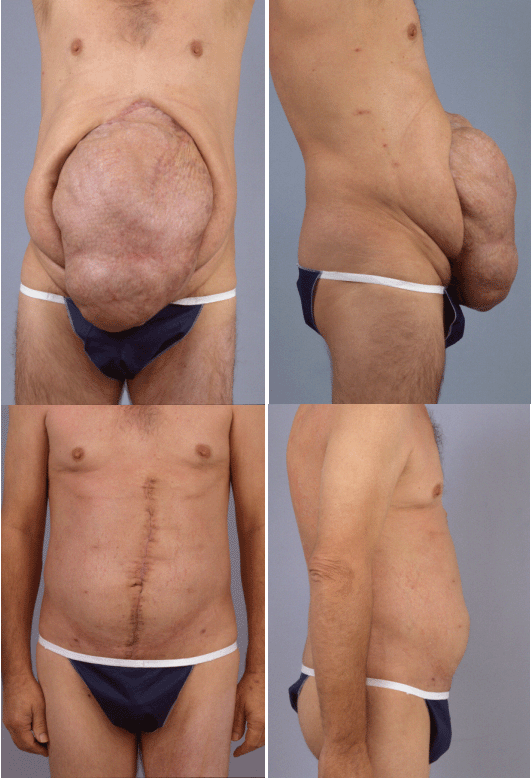Sunday, November 3, 2002
449
Successful Closure of Abdominal Wall Hernias Using the Components Separation Technique
The “components separation” technique involves separating the layers of the abdominal wall to allow midline advancement. The purpose of the study was to compare the success rate of the components repair versus other methods. This study is a retrospective review of 60 abdominal wall reconstructions performed between 1988 and 2001. For each patient, hernia etiology, body mass index, history of previous repair, tobacco use, size and location, average time present, technique of reconstruction, and postoperative results, including recurrence and complication rates, were reviewed. Repair methods included components separation (n=11, 3 with tissue expansion), mesh (n=14), primary (n=12), primary with mesh onlay (n=9), TFL grafts (n=6), TFL or latissimus flaps (n=4) and rectus turn over (n=4). The average age was 45.7 (range 15-72) and the average body mass index was 30.9 (range 13.8-59.2). The average defect size was 204cm2 (range 18cm2 -570cm2). The average time present was 2.7 years with 22 of 60 hernias having been previously repaired. The results were as follows: 16/60 hernias recurred with significant risk factors being BMI (p=0.04), previous colectomy (p=0.02), and wound infection and/or breakdown (p<0.03). Only 1 /11 hernias recurred using the components methods, 2/13 mesh onlay, 3/23 primary repair, 6/29 mesh, 2/6 rectus, and 6/8 TFL/latissimus. There were 19 complications (infection or wound breakdown) with risk factors being smoking (p=0.002), previous colectomy (p=0.014), and BMI>30 (p=0.08). The results suggest that the “components separation” method is a viable option for repair of complex abdominal wall hernias without the use of distant flaps or grafts.

View Synopsis (.doc format, 110.0 kb)
